61 Years Since the JFK Assassination & the System's Tattered Credibility
If you lie to everyone long enough, they just might not trust you anymore
Friday marked 61 years since the 1963 assassination of President John F. Kennedy in Dealy Plaza, Dallas, Texas.
Since that time, as everyone knows, a veritable industry of conspiracy theories have emerged as to who did it, who benefited, and what really happened.
The overall point of the 1991 Oliver Stone movie, “JFK” is really to ask the more central question of who benefited and avoid the distraction of the tertiary evidentiary issues.
Of course all people want to do is discuss the evidentiary issues though, because it’s fun and makes for great banter.
The left answers the ‘who benefited’ question by pointing to an amorphous blend of military-industrial complex folks who quietly work behind closed doors. This is the economic/materialist interpretation of the event.
The right, for the longest time, had no thesis whatsoever and just kind of shrugged their shoulders and said ‘trust the government’ or something.
Since the Tea Party, however, the line has shifted a bit, and wisening up, the right is coming to the correct conclusion, which is of course the war criminal Lyndon Baines Johnson.
The Stone movie pushes the left-wing interpretation of the assassination of course, but it does so with such finesse and artistic excellence, that it certainly sets the stage for what we now call ‘the deep state’ in almost perfect cinematic style.
This scene in particular, based mostly on Fletcher Prouty, serves that purpose:
I hate to confess this, but this case, this movie, this scene, is probably more influential in my formation as a LARP’y historian than anything else.
Oliver Stone’s “JFK” came out in 1991, which was 28 years after the Kennedy assassination. 1991 was 33 years ago from today for context.
I actually confronted Oliver Stone at a speaking engagement about a detail in the movie.
I asked him why he obscured the nameplate of Gen. Edward Lansdale, for whom Prouty blamed for coordinating the assassination, when referring to “General Y” in the film. Didn’t it make more sense to just name the General and not obscure the claim?
Stone’s response was, “What, did you like freeze frame the DVD or something?”
To which I responded, “well, yes, I did, but I’m doing so to try and figure out what you put in the movie. You put it in the movie.”
And he just shrugged it off and treated me like a typical debunker.
I mean, come on, I was doing the same thing to Stone that he had done to the historical record, and he had the audacity to dismiss me as I genuinely asked him the question.
The guy is a bit of a contradiction.
I wondered if this was a bit of compromise between conflicting sources: Prouty and Ellsberg, and this was his resolution to those incongruent inputs: make the claim but obscure the name.
Instead, I just got dismissed and curtly mocked off as he dismissed my question.
Anyway the JFK assassination is a fun rabbit hole to start down, because one arrogantly thinks they are going to crack the case wide open.
The left fights this battle so viciously because they will only permit and preserve one narrative: that Kennedy was a left-wing saint who was trying valiantly to end the Cold War and avoid Vietnam.
If it offends that narrative, it is ignored or pilloried.
The conspiracy theory in this regard is allowed to continue, even though it starts people questioning governmental statements in a way that the left later finds unhelpful.
It helps that it is a neoliberal-friendly conspiracy theory so you don’t get labeled any socially bad words for believing this conspiracy theory, at least no one goes nuclear on you until you start nosing around possible foreign government involvement.
In any case, the film is an excellent movie, the synthesis of so many theories, facts, evidence, is masterfully done by Oliver Stone.
And what I think is most notable is that no piece of evidence presented has been firmly debunked.
In many ways, the theories presented and even small bits of evidence, have been further reaffirmed over time.
And there are a million pieces of evidence, little rabbit holes to go down. Two of the primary debunkers, by the way, are author Gerald Posner, whom I place zero stock in, and former academic at Marquette, the John C. McAdams.
Posner published “Case Closed” in 1993, which handles some of the more prominent evidence in the assassination narrative, but does so extremely sloppily. The book is frankly an embarrassment, and seeks to serve the mainstream crowd that wants a thin veneer of investigation only to come to their predetermined conclusions.
McAdams ran, by far, the better of the two operations. Whereas Posner contented himself with handling this enormous evidentiary file with 200 pages, McAdams used a website to patiently go through every single evidence, claim, and assertion by the conspiracy-oriented crowd. McAdams was persuasive, and his research definitely kept the conspiracy-oriented crowd honest.
Even though McAdams passed away in 2021, his site lives on, and is well-worth a review.
To be clear, I generally lean towards the conspiracy-side of interpreting the event, but I will acknowledge that there are few ‘smoking guns’ to point to. Most of the evidence is direct evidence from that day in Dealy Plaza that doesn’t add up and otherwise make sense, and then a wide array of circumstantial evidence that is suggestive of a wider, broader, conspiracy.
So while E. Howard Hunt may have confessed to being involved in the assassination on his deathbed, his son, St. John Hunt was also a notorious fabulist who liked taking advantage of his father. Perhaps Hunt was being sincere, perhaps he was trolling, the man definitely had a credibility problem.
Is this clip a bit of Nixon indirectly admitting that LBJ was involved in the assassination, it’s ultimately hard to say, though his shit-eating-grin at the very end is suggestive that he wasn’t talking about what he was talking about.
Stone’s movie resulted in major legislative changes to declassify millions of pages of documents that were held at the National Archives. There is an entire section of its holdings related to this law, and this major effort at declassification.
The last records were finally released last year, in 2023. The 1992 law mandated that all of the relevant records be released by 2017. They were not, but the government reassures us that “99 percent” were.
But the government never bothers to follow its own rules when inconvenient truths are potentially about to be revealed. The system’s credibility was not destroyed by the JFK assassination and its aftermath, but the ongoing lies, cover-ups, and obfuscations have certainly revealed that no one trusts Uncle Sam anymore.
Your favorite abusive and lying Uncle has done a great job covering up and silencing the evidence and witnesses, but one still gets the feeling that the credibility is gone.
To that end, I would like to identify two major problems presented by the movie that have never been resolved, and two issues not presented by the movie, that stand up to scrutiny even now, 35 years after its release, that I think deserve more attention.
There are thousands of bits of evidence to consider of course, so these are just a few that I find most dispositive for finding that there was probably a conspiracy. Though the system has done an excellent job muddying the waters on any specific claim.
ISSUES PRESENTED BY THE MOVIE
The Motorcade Route and Timing Problems
Oswald only had a very select group of time from which to shoot from the Texas School Book Depository uninterrupted.
Oswald took a rifle that he’d never fired, whose scope is misaligned, and fires it at exactly the right time in order to make three shots with at least two confirmed hits from 265 feet away.
Oswald allegedly shot Kennedy at roughly 12:30-12:32, yet the motorcade was running at least 10 minutes late. How would Oswald have known the actions of everyone else within the building to give him an uninterrupted spot in such a critical location and known the motorcade was running that late?
As Stone’s movie mentions: why not just shoot him as he’s on Houston about to turn onto Elm?
If he didn’t plan it that way, and just took the risk, isn’t that an insane amount of risk when taking shots at a sitting President, to do so amongst your coworkers? If you don’t care about being identified, then why did Oswald later contest his participation in the assassination and call himself a ‘patsy’?

90 seconds after the shots, Dallas Police officer Marion Baker and School Book Depository supervisor Roy Truly run into Oswald on the second floor. He exits the building and boards a city bus. This is someone who just managed to defeat the nation’s Secret Service and his first known words after shooting Kennedy are “Transfer, please” to the bus driver.
Why Doesn’t the Zapruder Film Show the Secret Service Braking the Car
Eyewitnesses and photographs show the Lincoln limo braking prior to the fatal headshot. The limo was being driven by William Robert Greer of the Secret Service.
The film from Marie Muchmore seems to show the limo slowing, as a result of braking, around the time of the fatal head shot.
Yet the Zapruder film shows near-continuous motion.
OTHER ISSUES
The Zapruder Film is almost Certainly Disinformation Produced by US Intelligence
This book will set new standards for obsessively documenting not just a piece of evidence, the Zapruder film, but in also obsessively taking it apart to go through how film stock is warped to provide distorted perspectives.
The book is an amazing work, and I have never heard a convincing critique of it in any regard.
The basic point is that if you take the known height of Abraham Zapruder, the known camera he was using, and stand at the known single-point he was standing at, the perspectives do not line up with the real Dealey Plaza.
The video we know as the Zapruder Film appears to be a hoax perpetrated with a set standing in for Dealey Plaza that was not entirely accurate. The distances and perspectives are slightly off, and there are many specific ‘tells’ that show that the video was produced and heavily edited, in order to lead people to false conclusions about the assassination.
The Zapruder film sat in the safe at Time-Life for 15 years or so until being shown by Geraldo to late-night television. The CIA took possession of the video immediately and are on record as having made three copies of the original, so a total of four. There are only three films that exist, with one missing.
What’s on the 14 minute gap in a post-assassination phone call on November 23rd between J. Edgar Hoover and Lyndon Johnson?
There is the infamous 18 minute gap from the Nixon audio files, but there is also a 14 minute gap in recordings made by then-Vice President Lyndon Johnson.
There is a supposed transcript of the call, but it’s suspicious that calls before and after this one survive just fine, but for some reason this one is erased.
The official story is that Secret Service Agent Rufus Youngblood immediately acted to protect Lyndon Johnson when shots rang out by jumping on top of him and pushing him down.
And that’s why LBJ looks like he’s absent or ducking in Dealy Plaza photos.
LBJ was also ducking out on a grand jury being impaneled in Washington, questioning his aide Bobby Baker.
Baker was planning to testify to LBJ’s prowess as a Senator coming from his outright system and scheme of bribery and sexual favors to Senators from major U.S. industrialists and businessmen.
Nixon was in the Dallas Morning News on November 22, 1963 predicting Johnson would be dropped from the 1964 Kennedy ticket.
The Bobby Baker grand jury was suspended when news of the Kennedy assassination reached Washington.



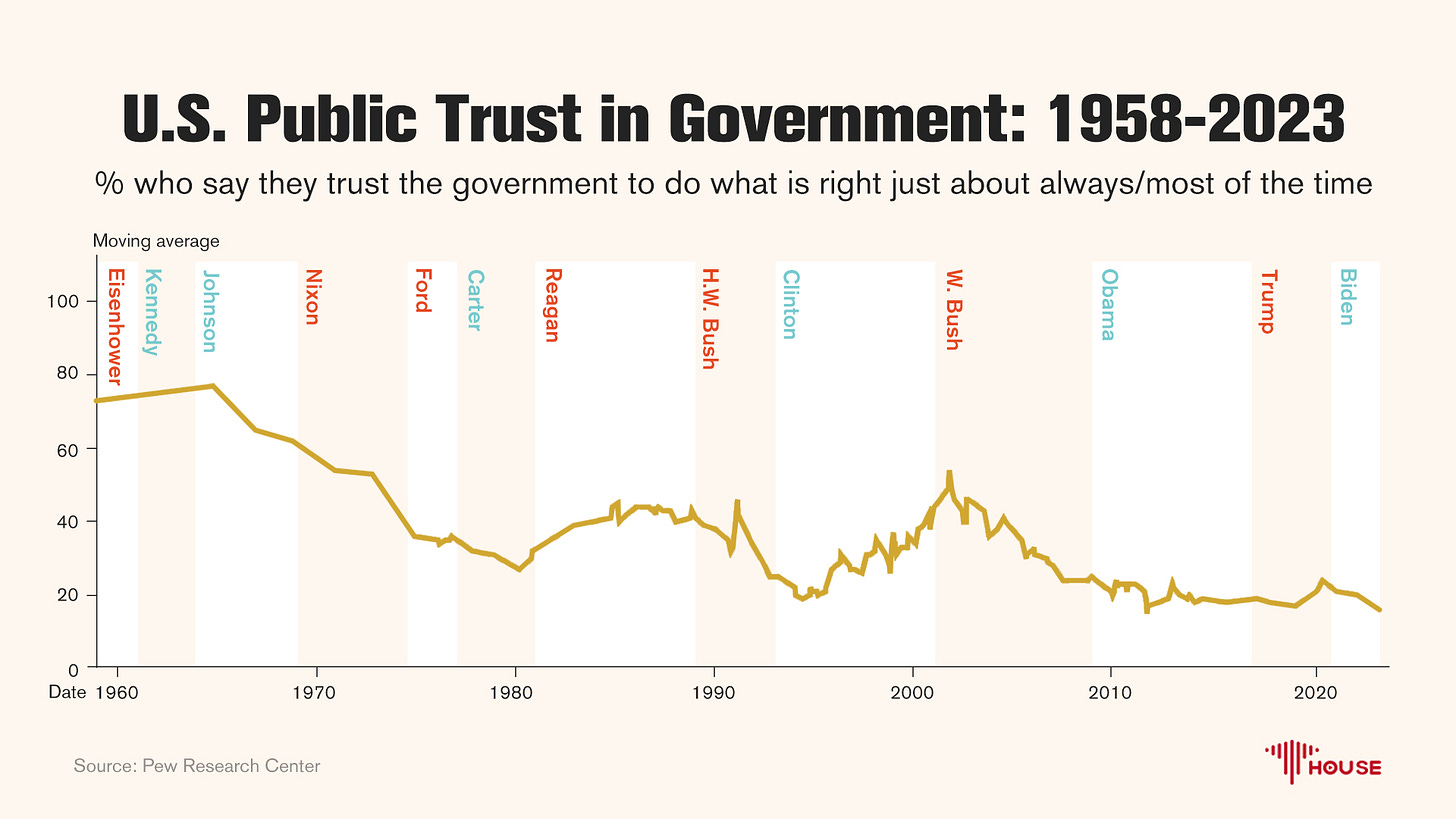


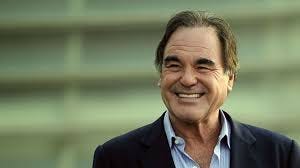
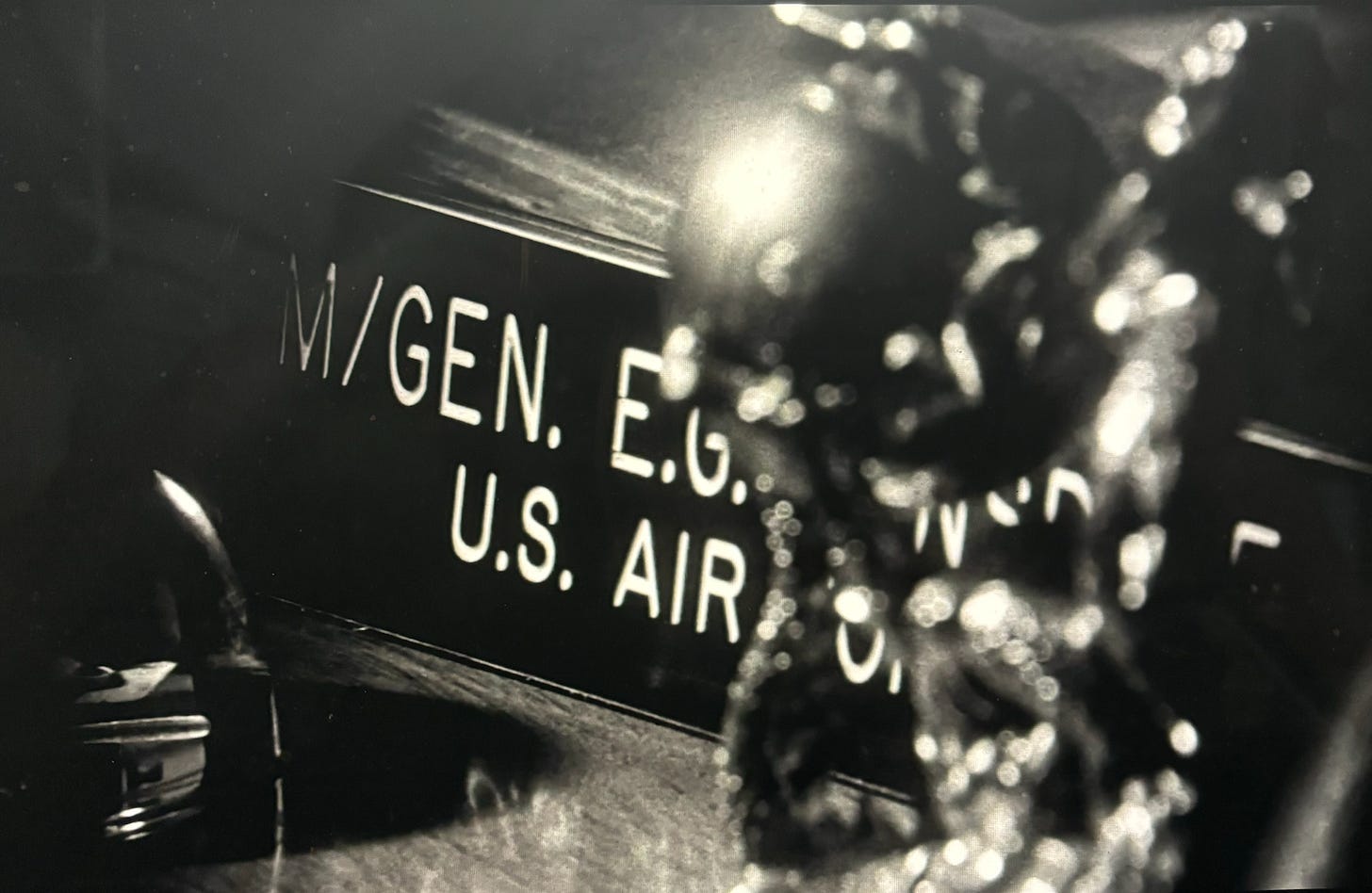


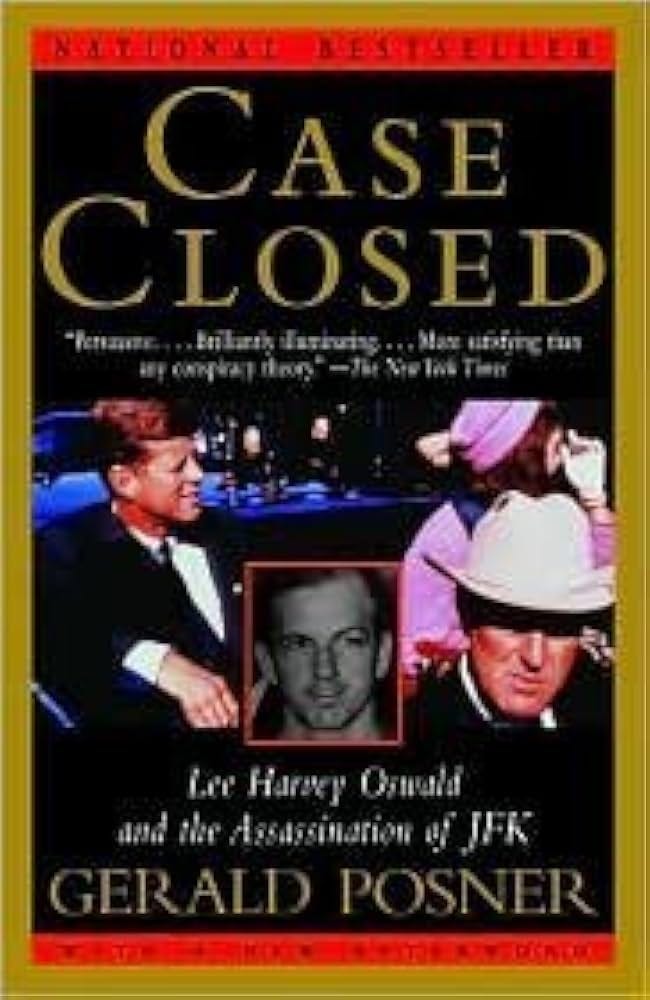
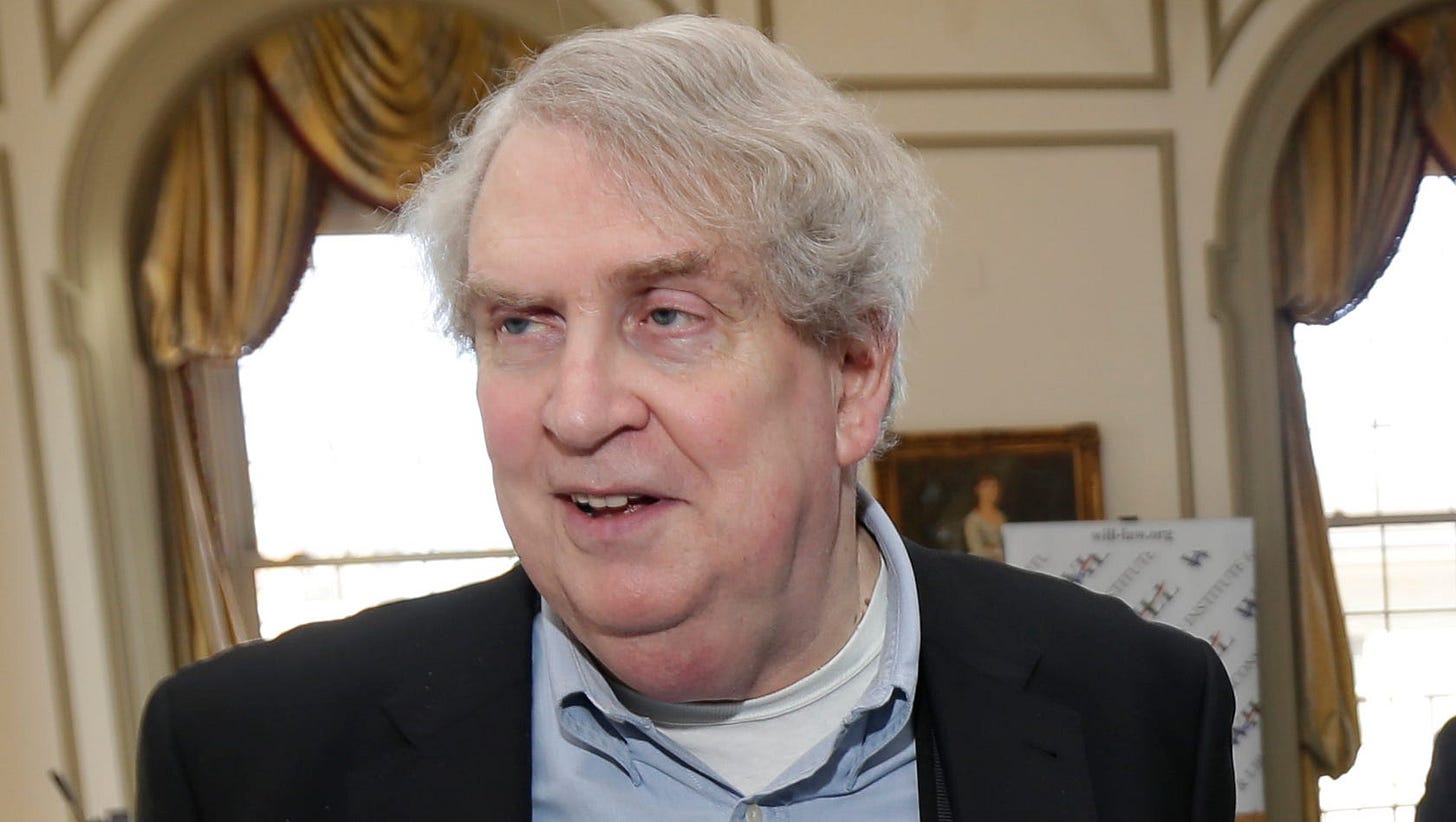



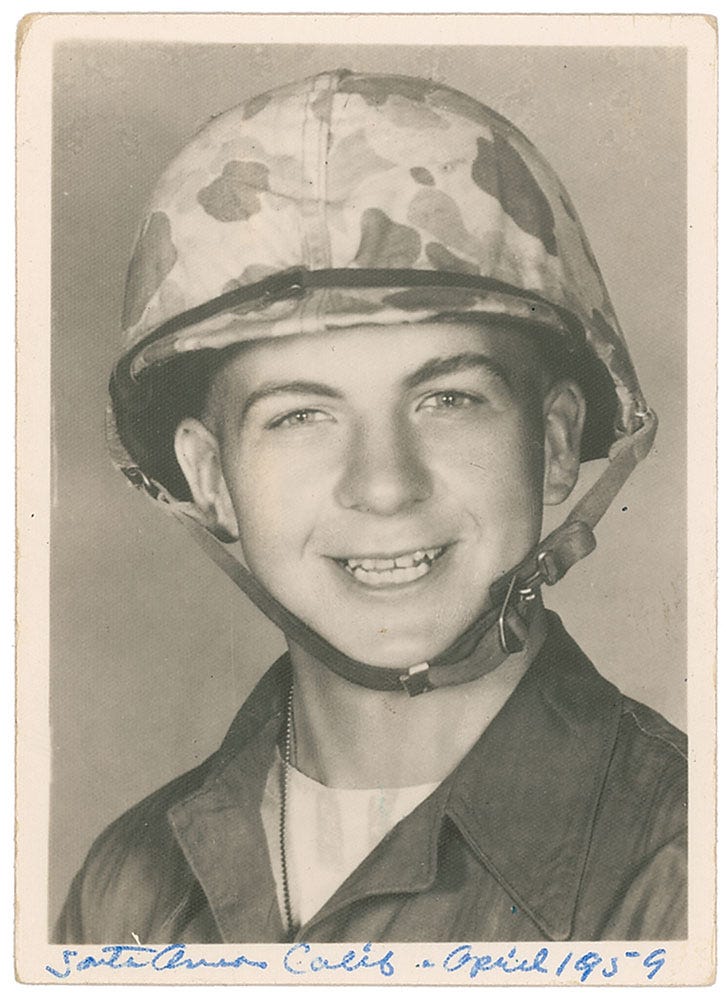

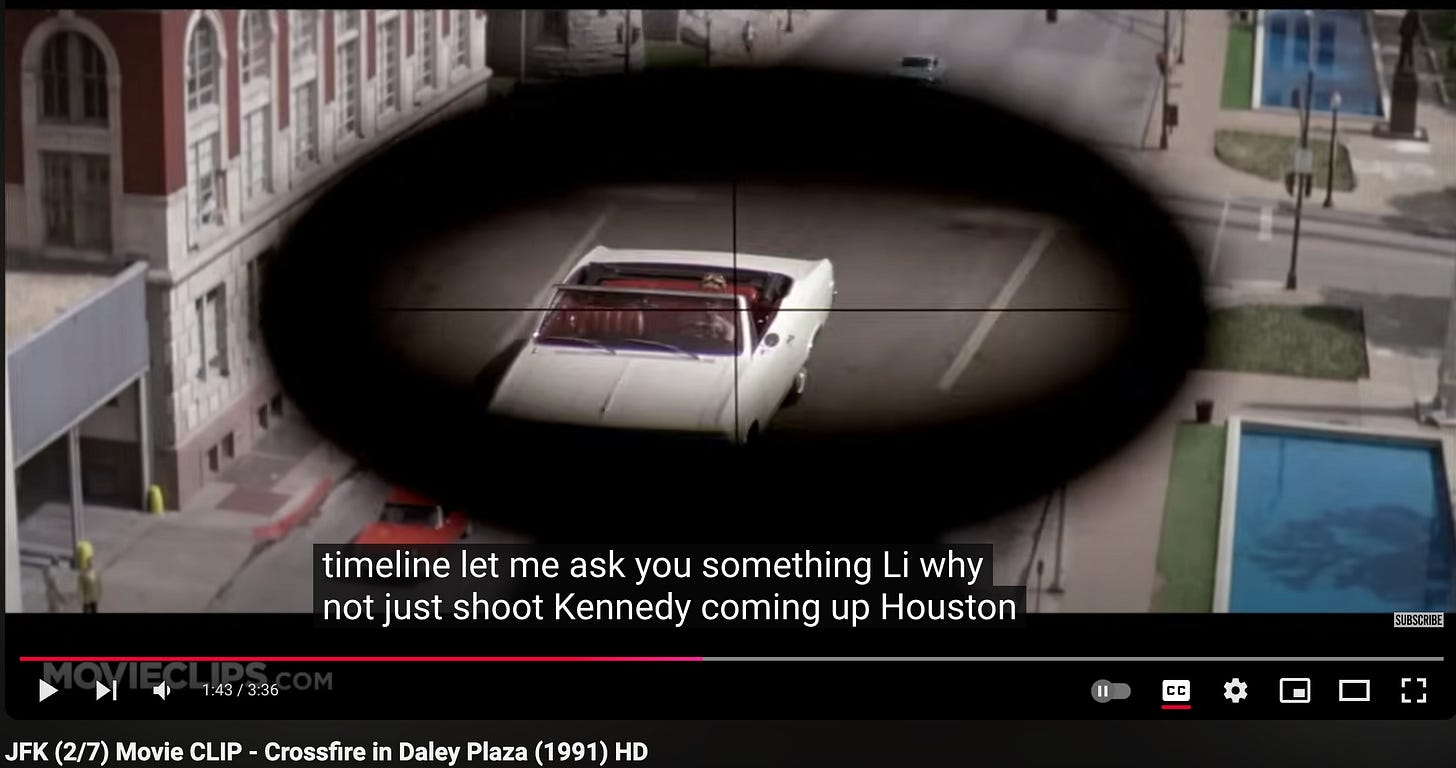

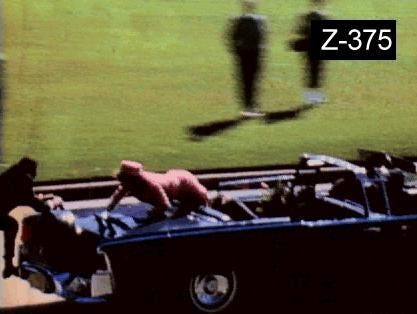
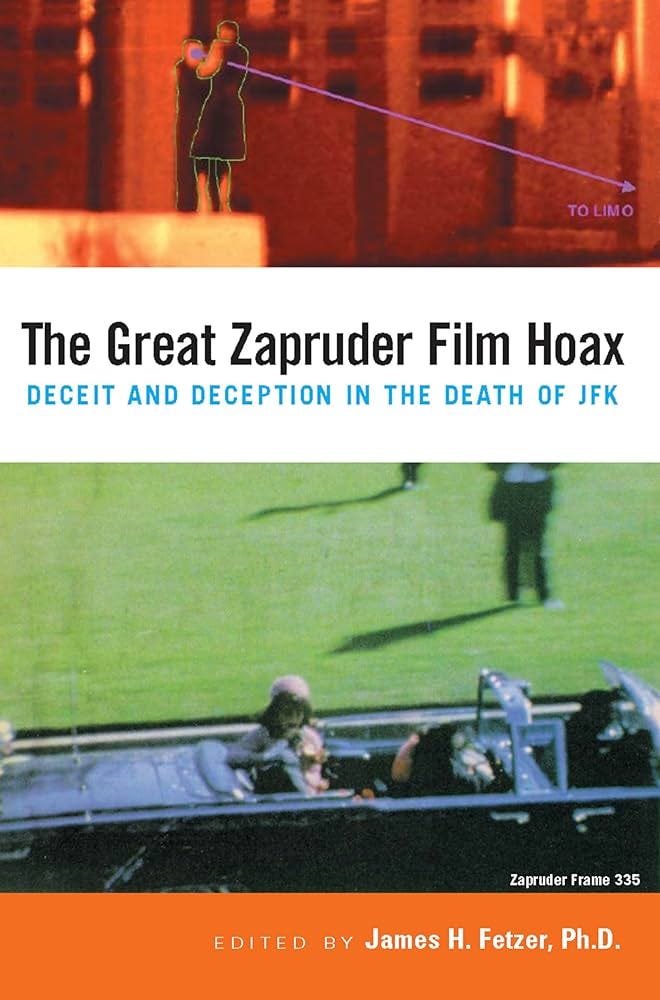

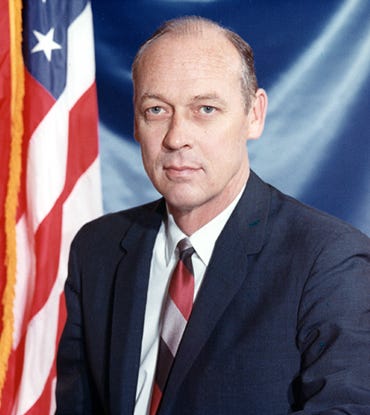
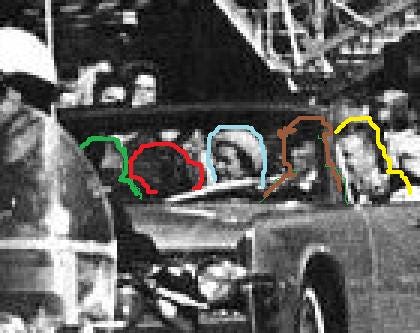
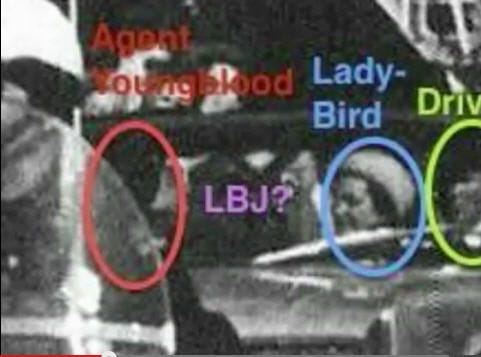
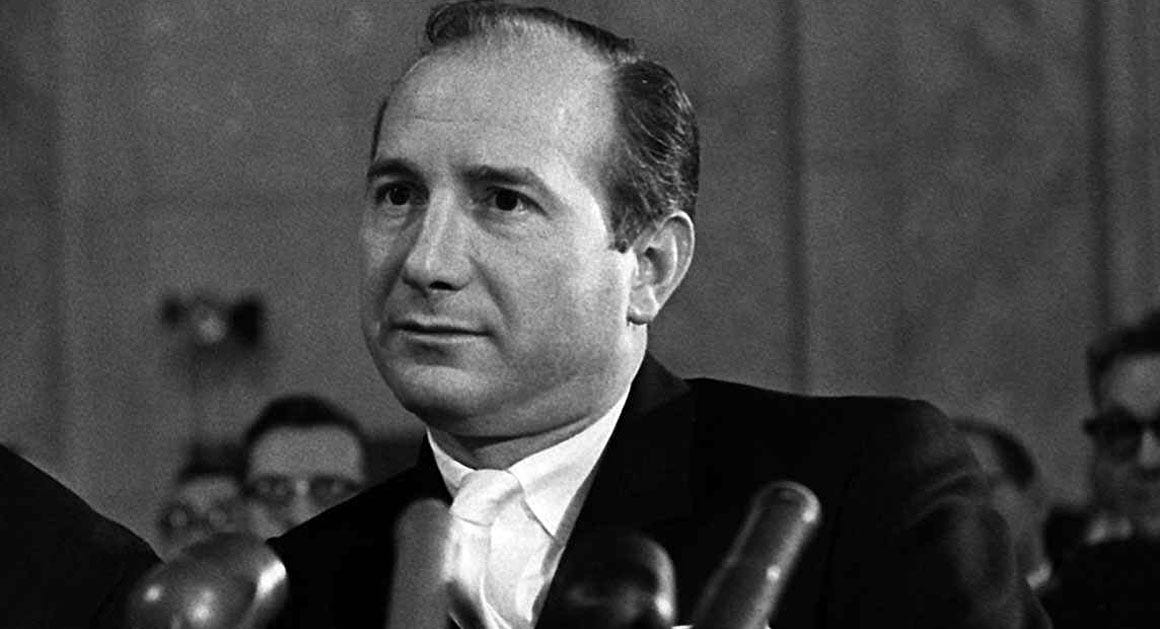
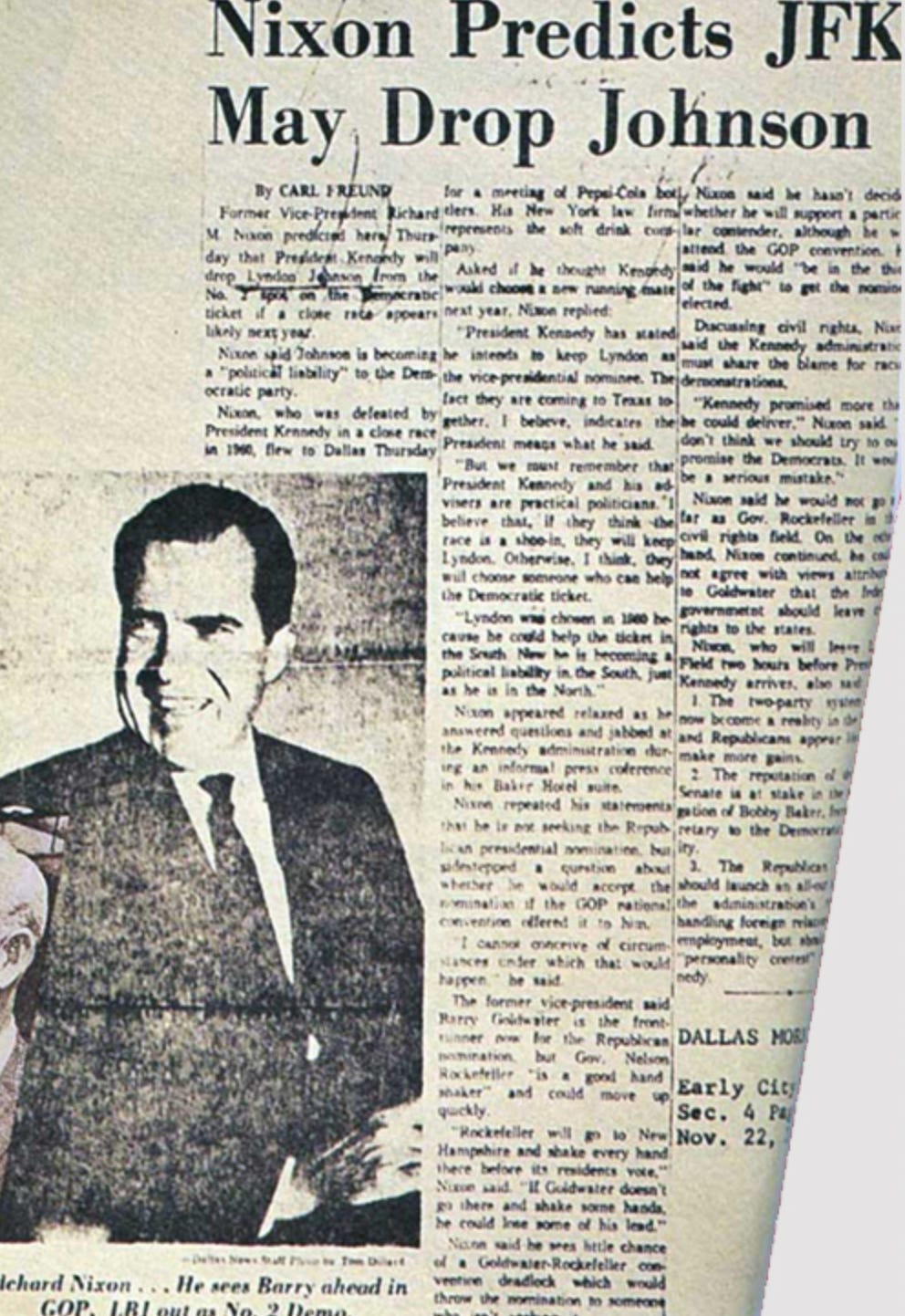
![Congressman Albert Thomas winks at President Lyndon Johnson during the swearing in ceremony onboard Air Force One, November 22, 1963 [800 x 584] : r/HistoryPorn Congressman Albert Thomas winks at President Lyndon Johnson during the swearing in ceremony onboard Air Force One, November 22, 1963 [800 x 584] : r/HistoryPorn](https://substackcdn.com/image/fetch/$s_!3tEe!,w_1456,c_limit,f_auto,q_auto:good,fl_progressive:steep/https%3A%2F%2Fsubstack-post-media.s3.amazonaws.com%2Fpublic%2Fimages%2F0bbb8b36-9a21-4a39-aa65-c9494fcd5786_800x584.jpeg)